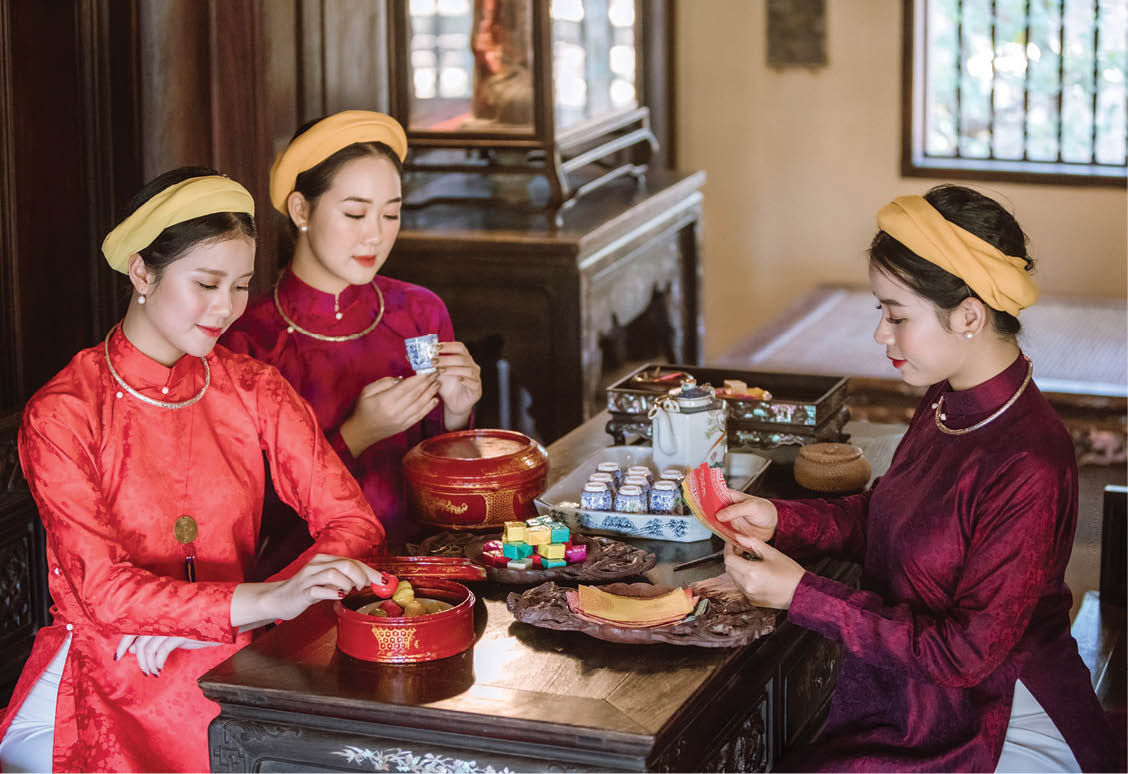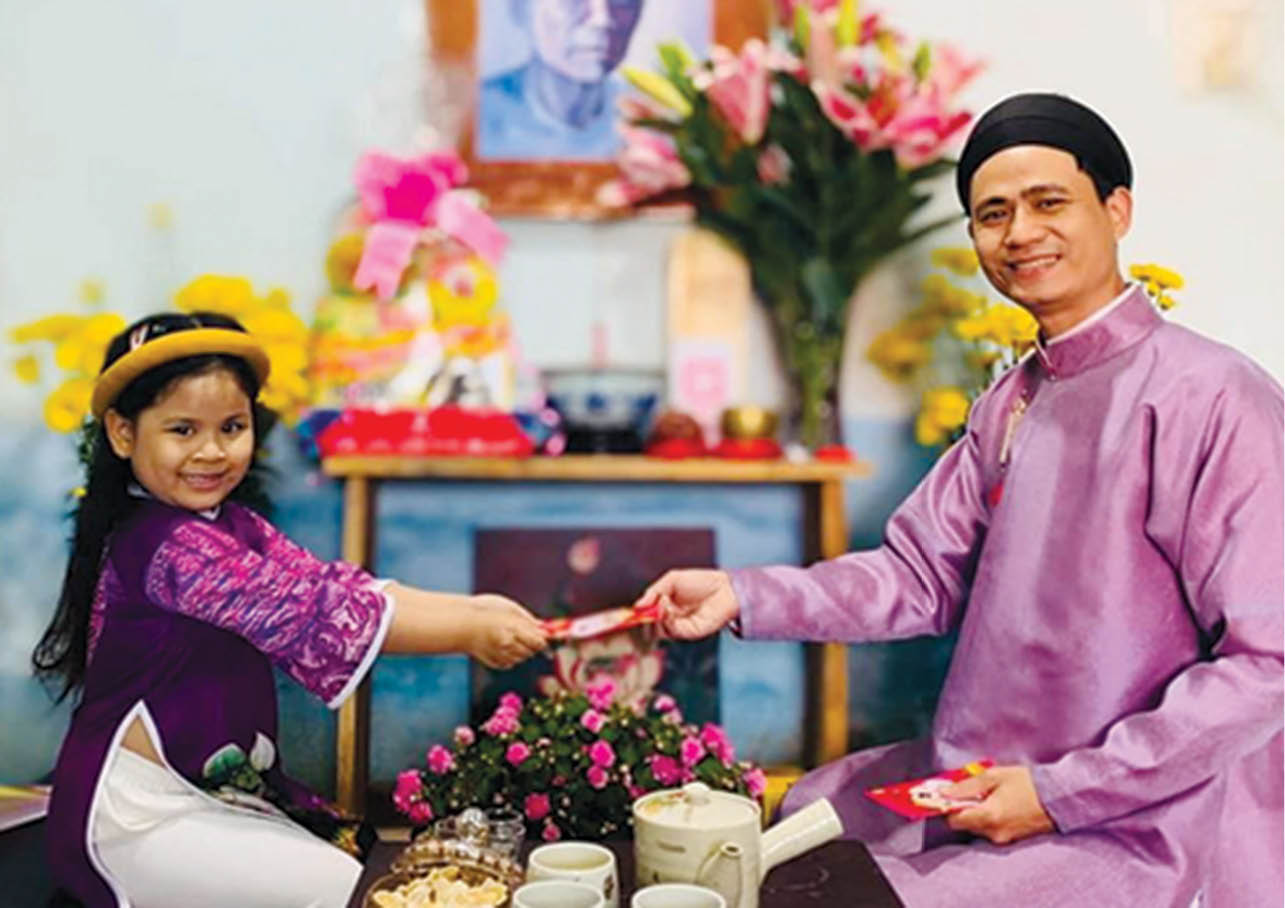The idea of developing Hue into the capital of ao dai, according to Dr. Phan Thanh Hai, is by nature the renaissance of the traditional heritage in order to integrate this heritage into modern life, gradually build up the images and brand name of ao dai Hue; and enables ao dai to become a unique product of cultural tourism. It also makes Hue city become the capital of ao dai Viet Nam.

Making ao dai a vision of beauty of the ancient capital
Restoring traditional heritage
There are several objectives to develop Hue into a capital of ao dai in Vietnam stated in the proposal of the project “Hue – the Capital of Ao dai”. These objectives include the promotion of the value and the brand name of ao dai Hue; the development of the brand name “Hue – the Capital of Ao dai Viet Nam”; and the training of artisans, designers and tailors of ao dai.
In addition, there are other objectives: establishing well-known trademarks for ao dai Hue; making ao dai Hue a unique tourist product; and investing the facilities, and opening showrooms and tailoring centers for ao dai to meet the public and tourist demands.
Together with the Ao dai Festival, being held every two years as a series of cultural public events with the participation of people from all walks of life, and becoming one of the highlight cultural events in the festivals in Hue, especially in Hue Festivals, the provincial authorities have also encouraged to use ao dai as the official attire in cultural and ritual activities and traditional festivals in order to create a distinctive feature of the ancient capital.
To achieve these objectives, the Chairman of the provincial People’s Committee pointed out duties to fulfill, which comprise searching and synthesizing the information to build up a database of ao dai, designing programs, video clips and other media forms to promote ao dai Hue and establishing and managing the brand name “Hue – the capital of ao dai”.
Meanwhile, procedure and policies must be made and human resources invested for the sake of promotion and advertisement. The Ao dai Hue tailoring industry should be given favorable conditions for development. A center for exhibiting, designing and tailoring ao dai, training human resources and organizing fashion shows of ao dai should also be set up; and, tours and tourist products associated with ao dai Hue should come into being.

The trend of wearing ao dai in Hue in recent time
The project also sets out the task of building up a dossier of the national intangible heritage, laying the ground for building the dossier submitted to UNESCO for the recognition of ao dai Hue as the intangible cultural heritage of mankind.
Dr. Phan Thanh Hai, Director of the Provincial Department of Culture and Sports, said that after researching carefully on its history, life and cultural values, the Department has prepared the intangible heritage dossier of the five-panel ao dai (a kind of ao dai for men) basing on two principles: traditional techniques and custom usage. It is expected that the document will soon be nominated as an entry in the list of national intangible heritage.
Building up a brand name for ao dai Hue
The concept “The capital of Ao dai” which was first brought forward in the scientific conference “Hue – the capital of Ao dai” in July 2020 has been approved by many researchers based on historical and traditional data as well as on the efforts for conversation and promotion of ao dai Hue.
According to Nguyen Xuan Hoa, a researcher, it is necessary to affirm that Ao dai Hue is a unique cultural value in the heritage treasure of Hue in order to attain a determination to build up the brand name for ao dai Hue as a unique intellectual product of the ancient capital. Therefore, in addition to extending the encouragement that high school girls and women wear ao dai in social activities frequently, Thua Thien Hue needs to launch campaigns to promote and honor the beauty of ao dai Hue.
It is also necessary to diversify the promotion of Ao dai to form the image of Hue as the home to Vietnamese ao dai – the capital of ao dai Viet Nam, province wide, nationwide and worldwide.
Nguyen Xuan Hoa said that there were many tasks to fulfill to make Hue a real capital of ao dai. First, it is essential to make the public aware of the ao dai as the costume for both men and women. Besides, the building up of the brand name of ao dai Hue must be closely connected with the unique traditional cultural values of Hue.
Taking advantage of Hue as the city for ao dai business, the local authorities must have policies to appeal the investors to develop the production and business specializing in ao dai Hue. It is advisable to expand the production of ready-made ao dai not only for men but also for women, for both ancient ao dai and Nhat Binh ao dai. In this way, there will be various styles of ao dai Hue, creating an impression of a land of ao dai when tourists come to Hue.
Although ao dai can be found nationwide, the ao dai designed by artisans in Hue bears its distinctiveness. For a sustainability of the distinctiveness of ao dai, Hue tailors and designers should be encouraged to make ao dai manually, with elaborate seams.
The designer Viet Bao said: “The ao dai Hue has not been classy because all it has is the skillful cuts and elaborate seams. It needs to display the beauty of the ancient capital in the product. To develop the brand name of ao dai Hue in the contemporary time, beside the enhancement of skills and techniques, having a connection with the fabric manufacturers is necessary to put the patterns and designs based on royal arts, Hue fine arts inspired by ancient capital culture onto ao dai.”
Story: Minh Hien – Photos: The Department of Culture and Sport